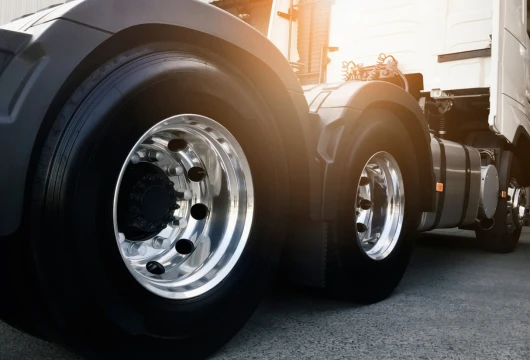Mormugao Port’s Green Transportation Initiative Expands to Reduce Carbon Emissions
The Mormugao Port Authority (MPA) in Goa has taken a major leap toward sustainable development by expanding its Harit Shrey scheme to include incentives for green trucks powered by alternative fuel sources. This forward-thinking initiative aims to reduce the port’s carbon footprint, which currently amounts to 32,000 tonnes of carbon emissions annually. Through this program, the MPA reinforces its commitment to a greener, more sustainable future, offering crucial support to environmentally friendly transport options.
The Harit Shrey program, previously focused on incentivizing eco-friendly ships, has now extended its benefits to cargo trucks running on green fuels like Liquified Natural Gas (LNG) and electricity. This move represents a substantial shift toward green transportation, paving the way for a cleaner, more efficient logistics chain at the Mormugao port.
A Pioneering Move Toward Green Transportation
Mormugao Port has become a regional leader in South Asia, particularly encouraging green logistics and transportation. Under the Harit Shrey program, MPA offers incentives based on a commercial vessel’s *Environmental Ship Index* (ESI) score, which evaluates how well ships comply with environmental regulations. Ships that meet or exceed these standards—producing minimal or zero nitrogen and sulfur oxides—receive discounts on port fees. This model has now been adapted to include trucks, marking a first in the region.
According to N. Vinodkumar, chairperson of MPA, “Acknowledging the carbon footprint is the first way to deal with it. We are emitting 32,000 tonnes of carbon dioxide. To reduce this carbon footprint, we are also expanding the Harit Shrey scheme to trucks to give incentives to trucks using greener fuel.”
The extension of the Harit Shrey scheme signifies MPA’s dedication to green transportation. It promotes the use of LNG-powered trucks and electric vehicles for cargo transportation. These green trucks, which emit significantly less carbon dioxide, represent a shift toward reducing the port’s overall carbon emissions and mitigating the impact of transportation on the environment.
Green Transportation and Energy Efficiency at the Core
One critical aspect of the port’s plan is the commissioning of a 3 MW solar power plant, which is set to be operational in the next few months. This solar plant is expected to cut the port’s emissions by 10% immediately, providing a significant contribution to its carbon reduction goals. As part of a broader strategy, MPA is focused on making sustained investments in renewable energy and green infrastructure, improving efficiency and lowering the port’s environmental impact in the long term.
In addition to reducing emissions from shipping and trucking, the port is taking steps to modernize its facilities and processes to ensure energy efficiency. The MPA’s vision includes installing dome structures for coal stacks to reduce air pollution and greening the area by planting 5,000 trees. Together, these initiatives are helping the Mormugao port solidify its reputation as a leader in sustainability.
Tackling Global Emission Targets
MPA’s efforts come when global maritime and transportation industries are under pressure to reduce emissions significantly. The International Maritime Organization (IMO) has set ambitious targets to cut carbon emissions from the shipping industry by 50% by 2050. The *Harit Shrey* scheme, focusing on eco-friendly logistics and transportation, supports this global drive and positions MPA as a proactive player in the international sustainability arena.
The importance of transitioning to green transportation must be recognized, especially in industries heavily reliant on fossil fuels, such as shipping and logistics. In this context, MPA’s innovative approach to incentivizing green trucks complements global efforts to reduce greenhouse gases, thus contributing to both national and international environmental targets.
A Bright Future for Sustainable Transport
The future of green transportation at Mormugao Port is bright. By incentivizing green trucks, the port is reducing its immediate carbon footprint and setting an example for other ports and logistics hubs across the region. MPA’s bold steps are creating ripples in the broader push toward sustainable infrastructure in South Asia, inspiring other ports to adopt similar strategies for carbon reduction.
Premier N. Vinodkumar emphasized the port’s commitment to reducing emissions through green transportation incentives and renewable energy investments. As part of the ongoing modernization efforts, the port is also working on completing a 4-lane connectivity project that will streamline operations and further enhance the efficiency of the logistics chain.
“By making green fuel choices more attractive through incentives and implementing renewable energy projects like the 3 MW solar power plant, we are well on our way to cutting emissions and achieving a sustainable future,” said Vinodkumar.
A Vision of Sustainability
With a robust plan for the future, Mormugao Port is positioning itself as a leading player in India’s green revolution. Projects worth Rs 1,152 crore are underway to modernize the port while reducing its environmental impact. Whether it’s using eco-friendly trucks, installing solar power plants, or expanding its green infrastructure, MPA is setting the stage for a more sustainable and efficient port.
MPA’s green transportation initiative is particularly significant in an era where consumers and industries prioritize sustainable practices. By fostering green innovations and reducing its carbon footprint, the Mormugao Port Authority is helping the environment and improving its long-term economic prospects.
As the world grapples with the challenges posed by climate change, initiatives like the Harit Shrey scheme are vital to driving the shift toward a greener economy. MPA’s incentives for green trucks represent a model for other ports and industries worldwide, showing how sustainable transport can contribute to a cleaner, more efficient future.
For more in-depth analysis and inspiring climate news, click here.

